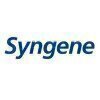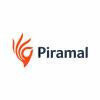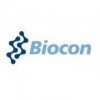
i
SAI Life Sciences
Filter interviews by
Clear (1)
SAI Life Sciences Research Associate Interview Questions and Answers
SAI Life Sciences Research Associate Interview Experiences
2 interviews found
I applied via Company Website and was interviewed in Apr 2022. There were 3 interview rounds.

(2 Questions)
- Q1. N-alkylation of primary and secondary amines
- Ans.
N-alkylation is a process of adding an alkyl group to a primary or secondary amine.
N-alkylation can be achieved through various methods such as reductive amination, Gabriel synthesis, and Hoffmann degradation.
Primary amines can be selectively N-alkylated using alkyl halides and a base, while secondary amines require a more reactive alkylating agent such as an epoxide or an alkyl halide.
N-alkylation is an important reac...
- Q2. NMR values, mitsunobu reaction, and some other named reactions, coupling reactions
(1 Question)
- Q1. About my experience in aragen and salary discussions
Interview Preparation Tips
I applied via Referral and was interviewed in Jul 2020. There were 3 interview rounds.
Interview Questionnaire
3 Questions
- Q1. All reagents functions and quenching
- Q2. All palladium catalysts reactions
- Ans.
Palladium catalysts are widely used in organic chemistry reactions.
Palladium-catalyzed cross-coupling reactions
Palladium-catalyzed C-H activation reactions
Palladium-catalyzed Heck reaction
Palladium-catalyzed Suzuki-Miyaura reaction
Palladium-catalyzed Sonogashira coupling
Palladium-catalyzed Buchwald-Hartwig amination
- Q3. All 1HNMR data
- Ans.
The question is asking for all the 1HNMR data.
1HNMR is a technique used in chemistry to determine the structure of molecules.
It provides information about the number and type of hydrogen atoms in a molecule.
The data obtained from 1HNMR can be used to identify functional groups and determine the purity of a sample.
Interview Preparation Tips
Top trending discussions






Interview questions from similar companies

Research Associate Interview Questions & Answers
Syngene Internationalposted on 14 May 2018
Interview Questionnaire
1 Question
- Q1. About practical knowledge
Interview Preparation Tips
Experience: MCQ based on basic knowledge

Research Associate Interview Questions & Answers
Syngene Internationalposted on 22 May 2021
I applied via Company Website and was interviewed before May 2020. There were 6 interview rounds.
Interview Questionnaire
1 Question
- Q1. About Chemical reactions
Interview Preparation Tips

Interview Questionnaire
3 Questions
- Q1. 50 ppm solution?
- Ans.
A 50 ppm solution contains 50 parts of solute per million parts of solution.
ppm stands for parts per million.
It is a measure of concentration.
In a 50 ppm solution, there are 50 parts of solute per million parts of solution.
For example, if we have a 1 million mL solution, there would be 50 mL of solute in it.
- Q2. Method validation
- Q3. Method Development

Research Associate Interview Questions & Answers
Glenmark Pharmaceuticalsposted on 22 Oct 2021
I applied via Campus Placement and was interviewed before Oct 2020. There were 3 interview rounds.
Interview Questionnaire
3 Questions
- Q1. Introduction
- Q2. Technical questions
- Q3. Vision
Interview Preparation Tips

Research Associate Interview Questions & Answers
Syngene Internationalposted on 10 Sep 2020
I applied via Walk-in and was interviewed before Sep 2019. There were 4 interview rounds.
Interview Questionnaire
2 Questions
- Q1. Related to your CV
- Q2. Prepare your own cv and be confident on that
Interview Preparation Tips

Research Associate Interview Questions & Answers
Syngene Internationalposted on 30 Jun 2021
I applied via Naukri.com and was interviewed before Jun 2020. There were 3 interview rounds.
Interview Questionnaire
1 Question
- Q1. Subject knowledge and basics of chemistry
Interview Preparation Tips

I applied via Company Website and was interviewed before Apr 2023. There was 1 interview round.
(1 Question)
- Q1. What is Buchwald coupling reaction
- Ans.
Buchwald coupling reaction is a palladium-catalyzed cross-coupling reaction used in organic synthesis to form carbon-carbon bonds.
Involves coupling of an aryl halide with an arylboronic acid in the presence of a palladium catalyst and a base
Commonly used in the synthesis of biaryl compounds
Named after its discoverer, Stephen L. Buchwald
Provides a versatile method for the formation of carbon-carbon bonds in organic mole

Research Associate Interview Questions & Answers
Glenmark Pharmaceuticalsposted on 23 Aug 2022
I applied via Approached by Company and was interviewed in Feb 2022. There were 2 interview rounds.

(3 Questions)
- Q1. Basics of Injectables
- Q2. Container Closure systems
- Q3. Previous Projects worked and experiences
Interview Preparation Tips
SAI Life Sciences Interview FAQs
Recently Viewed
Tell us how to improve this page.
SAI Life Sciences Interviews By Designations
- SAI Life Sciences Executive Interview Questions
- SAI Life Sciences Senior Executive Interview Questions
- SAI Life Sciences Research Chemist Interview Questions
- SAI Life Sciences Assistant Manager Interview Questions
- SAI Life Sciences Senior Research Associate Interview Questions
- SAI Life Sciences Executive Production Interview Questions
- SAI Life Sciences Research Associate Interview Questions
- SAI Life Sciences Research Assistant Interview Questions
- Show more
Interview Questions for Popular Designations
- Senior Research Associate Interview Questions
- Research Scientist Interview Questions
- Clinical Research Coordinator Interview Questions
- Clinical Research Associate Interview Questions
- Research Analyst Interview Questions
- Trainee Research Associate Interview Questions
- Junior Research Analyst Interview Questions
- Junior Research Associate Interview Questions
- Show more
SAI Life Sciences Research Associate Interview Process
based on 2 interviews
Interview experience
Research Associate Interview Questions from Similar Companies
SAI Life Sciences Research Associate Reviews and Ratings
based on 35 reviews
Rating in categories
|
Executive
660
salaries
| ₹0 L/yr - ₹0 L/yr |
|
Senior Executive
580
salaries
| ₹0 L/yr - ₹0 L/yr |
|
Research Chemist
310
salaries
| ₹0 L/yr - ₹0 L/yr |
|
Assistant Manager
280
salaries
| ₹0 L/yr - ₹0 L/yr |
|
Executive Production
229
salaries
| ₹0 L/yr - ₹0 L/yr |

Syngene International

Piramal Group

DIVI'S Laboratories

DRJ & CO
- Home >
- Interviews >
- SAI Life Sciences Interview Questions >
- SAI Life Sciences Research Associate Interview Questions













